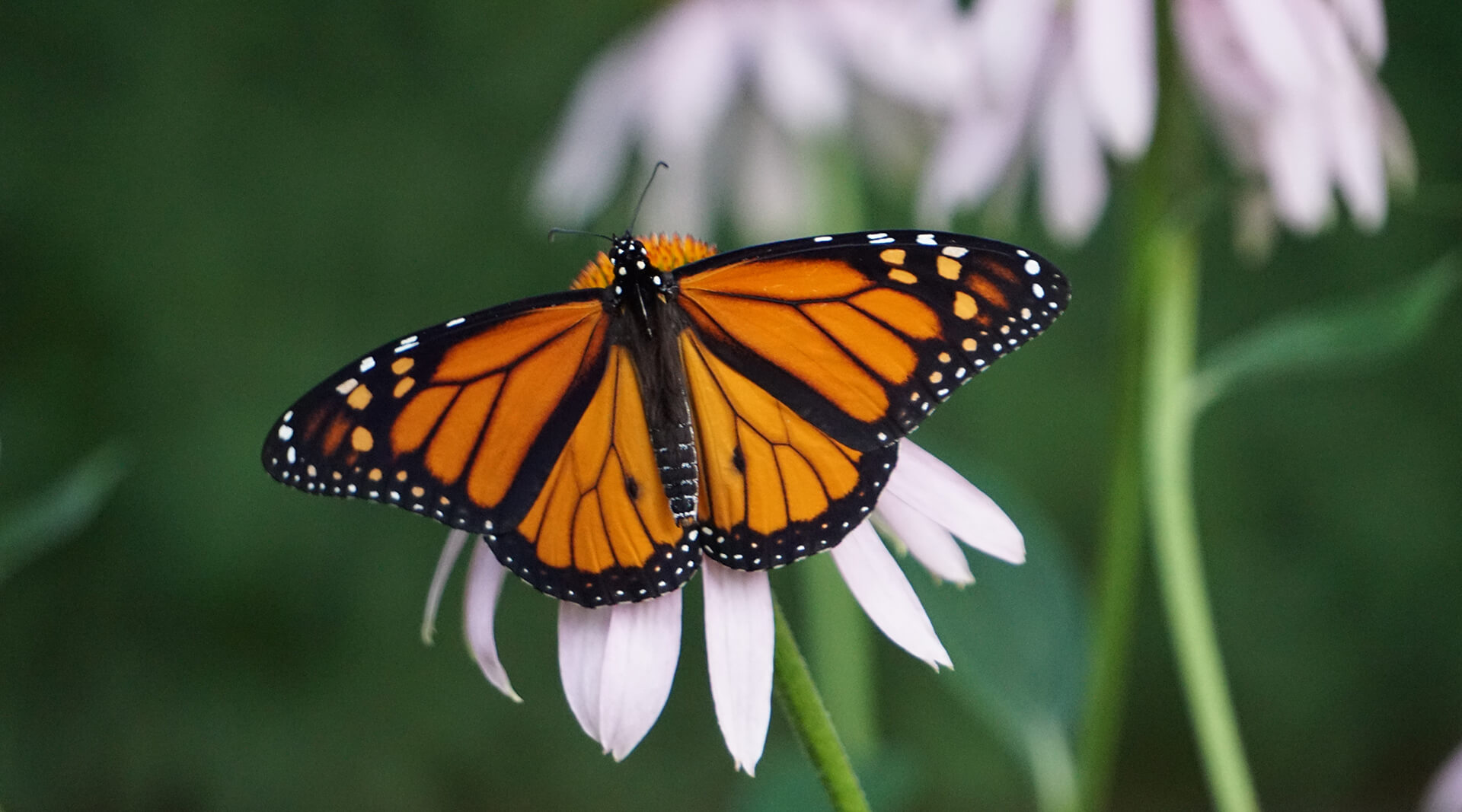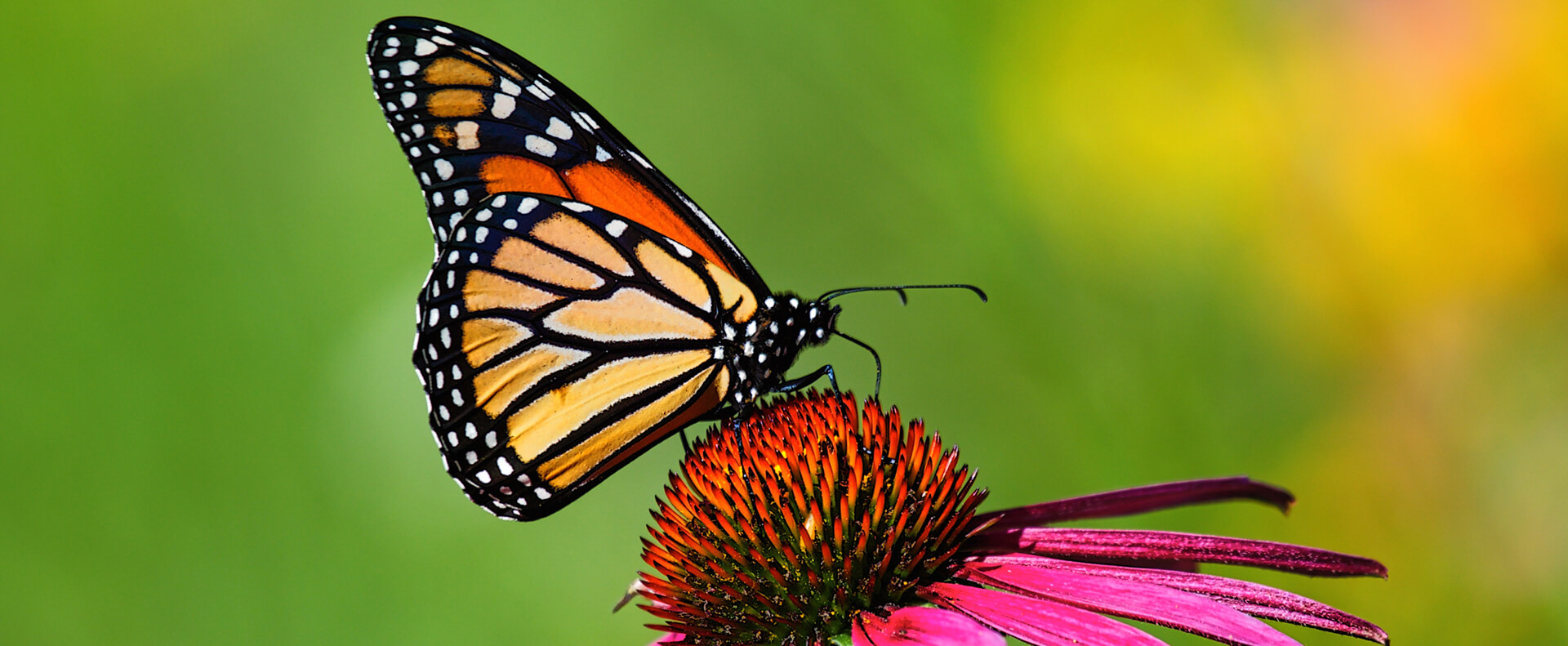Help Protect Natural Habitat
All wildlife is uniquely adapted for a specific habitat. The environments where plants and animals live depend on them, too. But increasing and irresponsible human activity can put this delicate balancing act in jeopardy. Development, pollution, the introduction of invasive species, and other actions can make it so that natural habitats are no longer able to support the native wildlife they have for millions of years. This leaves many plants and animals without a place to call home.
Crisis in Flight
With their incredible migrations of up to 3,000 miles, monarch butterflies flutter across North America every spring and summer. They range from Mexico northward to Canada in two populations: one on the eastern side of the Rocky Mountains and a significantly smaller group on the western side.
Once numbering in the millions, the western monarch migratory population has dropped to less than 2,000 butterflies—a population loss of more than 99.9 percent since the 1980s. The incredible migration of western monarch butterflies—a unique and fragile piece of North America’s natural history—is on the brink of collapse.
The areas where western monarchs gather in the winter have specific environmental attributes that make them ideal resting spots. Lacking protection from development, many of these natural habitats in California are in decline.
Habitat loss means adult butterflies do not have sufficient places to breed and lay eggs in the spring or gather food from nectar plants within their historic range.
San Diego Zoo Wildlife Alliance is working with our conservation partners in the call to advocate for these brilliant butterflies and make an impact on this conservation crisis.


